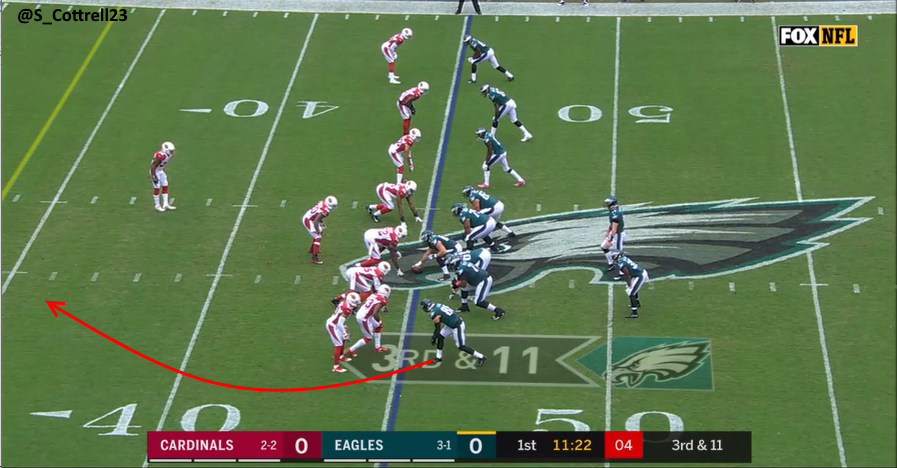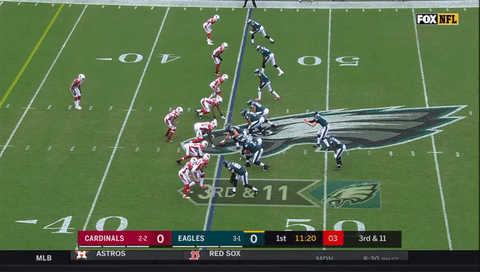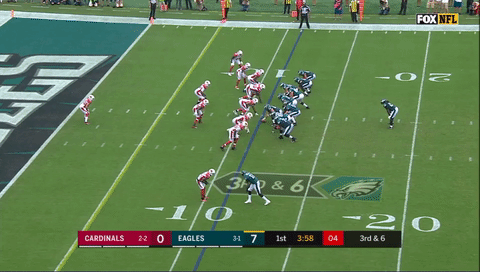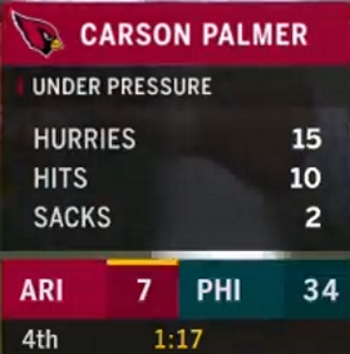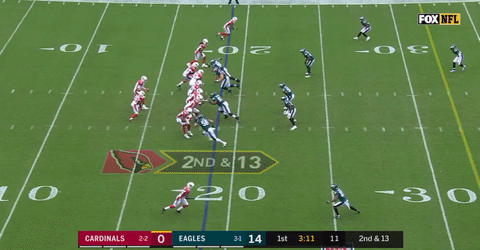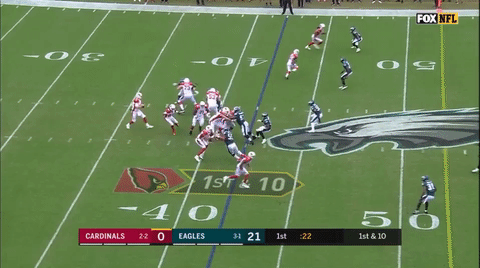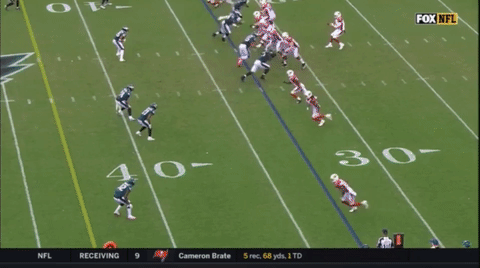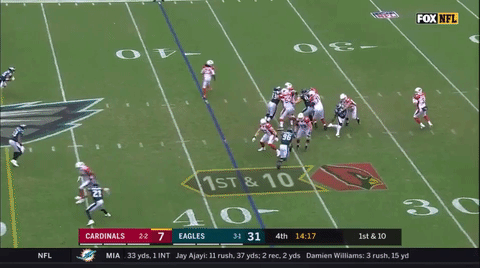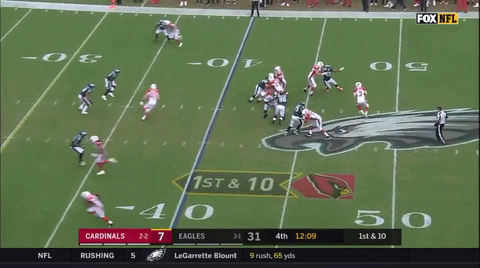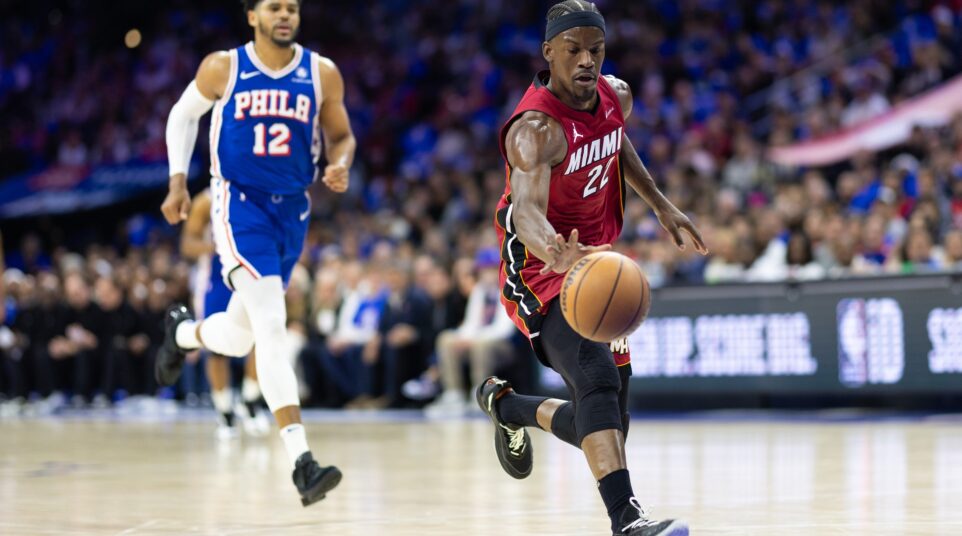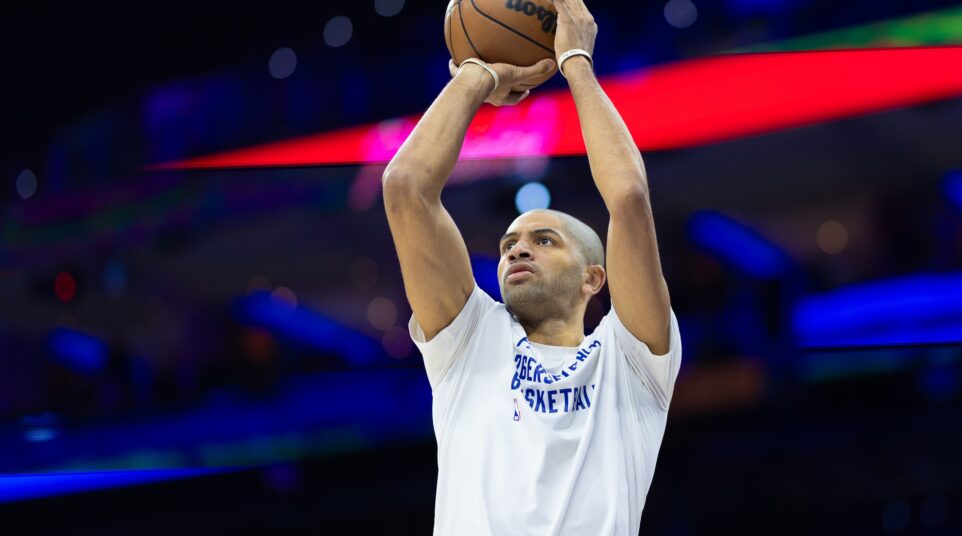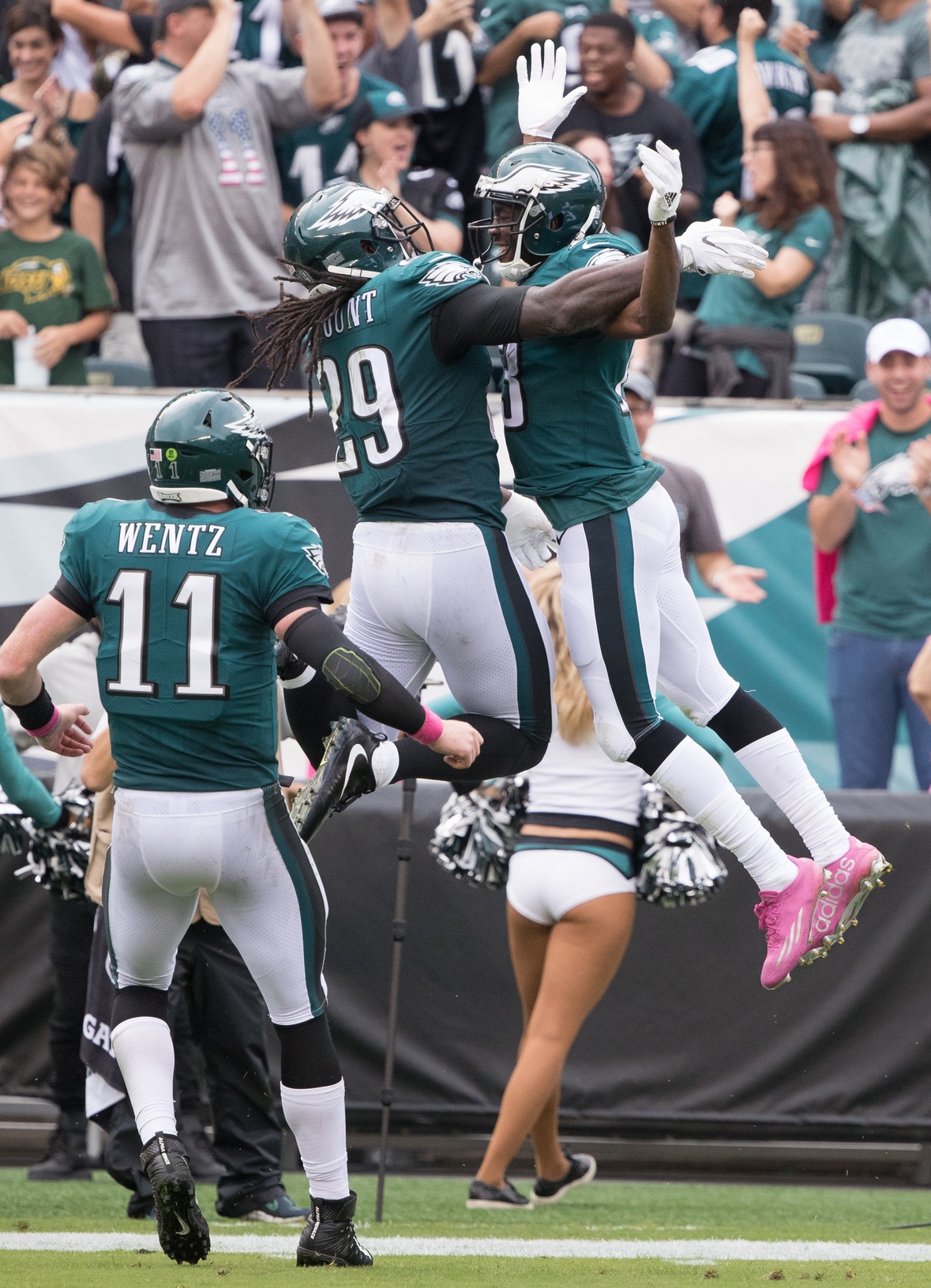
Three and Out: Offensive Identity, The Seam Bender and Finishing on Defense
That was such a nice win.
Like a steaming cup of hot chocolate after two hours of shoveling snow kind of nice. Or Jameson. Your choice.
The blood pressure didn’t flare up and out of control (well, maybe just for a minute there towards the end of the first half), but when was the last time an Eagles’ win was this relaxing and enjoyable? It was a welcome change.
Oh, and one more thing before we jump into it; Carson Wentz is the fucking man!
Now, let’s dive in.
An Offense Finding Its Identity
For as long as I can remember, the Eagles’ offense has been good enough to keep them in games, and even excite us at times, but they’ve always missed one critical piece of the equation.
Late in the Andy Reid era, they would dazzle us with big plays between the twenties, only to disappoint on third down or in the red zone. When Chip Kelly decimated the roster, they then became efficient with the four yard dump-off, but lost those big plays. For years, they’ve had one piece but were missing another.
Through the first four weeks of this season, the offense had been moving the ball pretty well. They were converting on third downs, controlling time of possession, and doing just enough to win.
On Sunday, the Eagles continued their third down success, converting nine of their fourteen primarily due to Wentz playing God again.
#Eagles QB Carson Wentz today on 3rd down: 11-of-12 (91.7%) for 225 yards (18.8 avg.), 3 TDs, 9 first downs.
— Adam Caplan (@caplannfl) October 8, 2017
Of the five unsuccessful third down attempts, three were essentially concessions where the Eagles didn’t even really attempt to pick up the first down and just opted for field position or a field goal instead.
That kind of execution on third down generates momentum for the offense, but can also be back-breaking for the opposing defense.
Despite the third down success, there were still two missing ingredients that were keeping this offense from reaching it’s true potential through the first few weeks. One of them was converting in the red zone.
The other missing offensive ingredient was the deep ball. Two weeks ago, I broke down the Eagles’ struggles with the deep ball and said it was the only thing holding them back from being an elite offense.
On Sunday, after striking first and tagging 14 quick points on the Cardinals, they followed it up with a deep dagger to Torrey Smith, which essentially put the game away in the first quarter. Later, with the Cardinals still holding out hope for some type of a comeback, the Eagles hit them in the mouth again with a 72-yard strike to Nelson Agholor.
Situational football is the difference between a good and average offense. Every team has the ability to strike up a big play from time-to-time, but doing when it counts the most (on third downs) and in confined spaces (the red zone), is another story. Adding a quick strike element on top of that moves an offense into the elite category.
This game felt much more comfortable than any other this season. But if you replace one of those red zone touchdowns with a field goal and take away the two deep bombs, this game is essentially the same as the others – a game that the Eagles dominated but couldn’t close. Luckily, that wasn’t the case on Sunday. The impact of those two previously missing ingredients is quite clear.
The Eagles offense may not be ready to be moved into that elite category just yet, but they are circling the edges and it’s really satisfying to watch.
Ertz Can’t Be Stopped on the Seam Bender
Zach Ertz’s breakout year is finally here, but that’s old news. Now we need to know why.
A number of factors have contributed to his early success. Alshon Jeffery and Torrey Smith have influenced the coverage around him, he’s found consistent rhythm with Wentz, and, for the first time in a while, he’s not starting the year injured.
One of the reasons not talked about enough is the fact that he just cannot be stopped in the middle of the field, which Kevin Kinkead mentioned on Monday. Ertz is consistently beating his man and giving Wentz an easy target for what is essentially amounting to free yards every week.
There’s one route in particular that he’s really hurting defenses with, and that’s the seam bender. The Eagles have gone to it several times over the past few weeks and Ertz is using it to make defenses pay.
The purpose of the route is to attack the defensive middle where Ertz is most dangerous. With the attention he commands, however, he often has a defender lined up right over top of him, making it difficult to run a linear route.
In order to give Wentz an easy throw, Ertz must win inside leverage on the defender. He starts the route by pushing outside in his release, which widens the defender. He can then break back inside, gain leverage, and use his body to shield the defender from the ball. That gives Wentz a safe, easy throw down the middle.
Ertz ran the route once last week in Los Angeles, picking up 19 yards and first down, and then again this week for a key third down conversion on the Eagles’ first drive:
He later ran the same route down in the red zone, secured the throw from Wentz and fought his way into the end zone to put the Eagles up by two scores:
There’s nothing fancy about this route, but Wentz and Ertz seem to love it. Unless defenses want to start bracketing Ertz underneath, it should be a constant in this offense moving forward.
Defense Lacks the Finishing Touch
I don’t intend to rain on the Eagles’ parade at all. The win over the Cardinals was a great game all around, and the defense played great. The pass rush got consistent pressure on Carson Palmer and forced him into several poor throws. The secondary played well, didn’t really get beat deep and were doing a really nice job getting downhill and making tackles all game long.
If there was one area where this defense could improve, though, it’s their ability to finish. Despite getting consistent pressure on Palmer, the Eagles left the game with only two sacks:
Last year, I attended a coaching clinic and had the opportunity to learn from a long-time college defensive coordinator. One thing he said that stood out to me was that he considers a sack to be a selfish play. He certainly accepts them when they come, but he doesn’t push his players to get them because sacks don’t allow the rest of the defense to have any fun. It doesn’t force the quarterback to fumble or throw an ill-advised pass.
Realistically, this is a bit of an exaggeration, but his point is valid. Sacks aren’t everything, they’re only one alternative to a play, and sometimes not the optimal outcome. But if you’re not getting sacks on the front end, you need to be able to capitalize on the other end.
Coming into the Cardinals game, the one thing we knew for sure about Palmer was that he’s good for at least a few of those ill-advised passes each week. Sunday was no different, but the Eagles couldn’t take advantage. By my count, Palmer threw five passes that could have been intercepted. Individually, each non-interception may have its own valid reasoning behind it, but, on the whole, the Eagles need to make more of these plays.
On the first one, Chris Long gets the pressure, but Patrick Robinson can’t hold on for the pick:
The next one was more of a jump ball, but Robinson again failed to haul it in:
The third would most definitely have been an interception if Rasul Douglas takes two more steps back, but he underplays it:
The fourth was thrown right to Jalen Mills, but he is hit at the catch point and the ball pops loose:
The last one was a tougher play to make and just a good play overall by Robinson to stay with John Brown, but he can’t come down with the ball:
Again, these weren’t examples of bad coverage by the Eagles’ secondary. With the exception of Douglas’ miss, all of these were really good pass breakups. As the season progresses, though, and the Eagles make a push for the division crown and the playoffs, these could be the plays that make the difference.
If the Eagles’ defense is unable to finish on one end, they need to be able to do it on the other.


